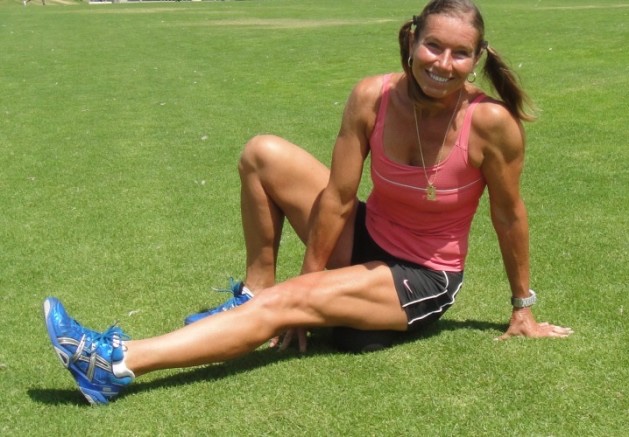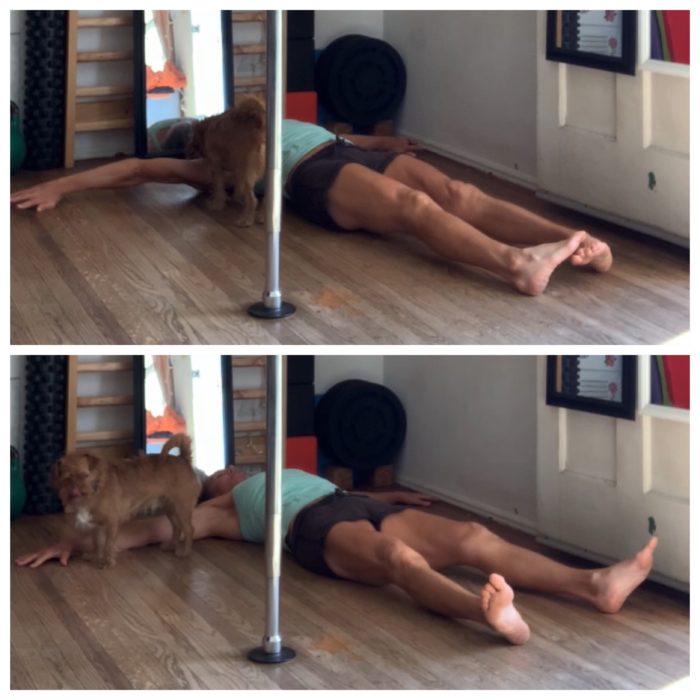If you are an athlete, you most probably have tight hamstrings, except if you pay daily attention to them with stretching, self-myofascial release, massages, and regular strengthening of the backside muscles, including glutes, hamstrings, calves, and back.
Unless you are a professional athlete, the chance is that you don’t have time nor the obsessive desire to do this work almost daily. Life happens, you work, go to school, take care of your family, and make time for training, playing tennis and eating healthy foods. The extra work of stretching and massaging is probably not on your list.
It is very common that tennis players have tight hamstrings. The hamstrings work during running and jumping on the court. They assist to bend the knee and extend the hip. Many tennis players are “quad-dominant” (meaning that the quadriceps in the front of the thigh is strong and dominating in the movement) and their backside (glutes and hamstrings) are weakened.
Often, after your training or tennis practice, you sit down or jump into your car to drive home or to work, then you sit again. The sedentary lifestyle and sitting for prolonged periods are detrimental to your hamstrings. They get short and stiff and they form pesky trigger points frequently.
The trigger points prevent the hamstring muscles from proper function and complete lengthening. Hamstrings with trigger points don’t respond well to stretching or warm-up, which increases the risk of strains, pulls or tears.
You can prevent future injuries by increasing the functionality of your hamstrings with self-myofascial release.
Tight hamstrings can strain your gluteus muscles because they work together, and if the hamstrings don’t work correctly, the gluteus gets overworked. Also, tight hamstrings change the angle of your pelvis, flattening your lower back and you can get serious chronic lower back problems. When you lose the curvature in your spine, your upper back is affected too and you can get pains in your upper back and neck as well.
You see how everything is interconnected.

Release Tight Hamstrings with Self-Myofascial Techniques
- Get down on the floor and place a foam ball (about 6–8 inches in diameter) or a firm roller (such as RumbleRoller or The Grid) under your hamstring.
- Put the opposite foot firmly on the ground so you can use it for balance and leveraging your weight.
- Move all your body weight on the ball/roller and support yourself with the hands for balance.
- Roll around slowly to find sore spots (trigger points) and when you find one, breathe deeply and stay on it until the pain goes away.
- Keep breathing and move systematically through the entire length of your hamstrings from the knee and up toward the hip.
- You can rotate your thigh inward or outward to reach trigger points on the inside and outside of the hamstrings.
- Pay a lot of attention to the most painful areas.
Release Tight Hamstrings—Seated Version
- Sit on a firm chair or bench.
- Put a tennis ball or lacrosse ball (it is much firmer) under your hamstring.
- Find a trigger point and put all your body weight on it.
- Roll in small circles around the trigger point while breathing deeply until the pain goes away.
- This method is easy to do “secretly” even in social situations :-)
Trigger points in the hamstrings are deceitful. You don’t know about them until they cause you serious troubles. Pay good attention to any stiffness in your hamstrings and always look for the trigger points preventively.
Stretch your hamstrings regularly as well because it is easier to do anytime, anywhere. Also look into your feet and how tight they are. Previously, we described how you can release tight hamstrings with a foot massage. Try this technique in addition to the self-myofascial release.
Your hamstrings will remain healthy and fully functional and your performance on the court will improve as well.
Find more injury prevention and tennis fitness exercises in “Tennis Fitness for the Love of it” book on Amazon.com. Educate yourself, pay attention to your body and stay healthy and injury-free forever.
.


